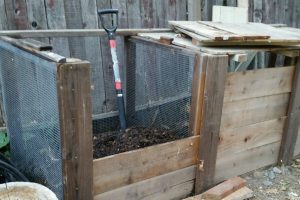Fall is here! Leaves are everywhere—beautiful yellows, reds and greens. It’s my favorite time of year. As I celebrate California Department of Food and Agriculture’s Healthy Soils Week from December 4 – 8, I see ingredients for soil enrichment and plant protection all around (and no 90+ degree weather to endure).
Leaves! My favorite tools are my leaf blower, lawn mower and rakes. We collect leaves, toss them on our small patch of lawn and mow the two together. This makes almost instant compost, the combination of green and brown (with a few tomato and squash plants mowed in as well). My mulching mower adds more leaves to the lawn to feed it through fall and winter. We clean up garden residue while generating no smoke from leaf piles burning.
I store additional leaves in a large ‘barrel’ of 2×4 wire fencing. (It’s best to mow them first, but if you can’t find the energy, they just take longer to decompose.) The leaves sit in this enclosure, exposed to rain and snow over the winter, and amazingly break down into lovely compost (leaf mulch aka leaf mold) to feed your soils.
Nature provides many more opportunities:
Animal manure supplies nitrogen, phosphorus, potassium and micronutrients for plant growth. It also adds organic material that improves soil, increases water holding capacity and promotes growth of beneficial soil organisms. (Never use pig, dog or cat manure in vegetable gardens or compost piles!)
If you have chickens, let them into your now empty beds and they’ll dig up anything left, eat any bugs they can find and fertilize the soil to their hearts’ content. Chicken manure by itself is high in ammonia and needs to be aged and incorporated into compost; otherwise, it will burn plants.
Rabbit manure makes wonderful fertilizer, either dressed on top of resting beds or incorporated into compost (we call them bunny blessings). Goat droppings are like gold, high in nutrients and needing little or no aging. All you have to do is collect and spread it around.
Horse droppings, from a nearby stable, mix well with my compost. (Horse droppings tend to have viable weed seeds that sprout into weeds.) Steer manure also needs little aging and can be purchased at very reasonable prices if you don’t have a source. Do check to see how much other organic matter has been added to manure when you purchase it.
Cover crops are ready-to-sow seeds that do the work for you, adding nitrogen and organic material to the soil while protecting from winter erosion. Examples include winter rye, hairy vetch, red clover, oats, buckwheat, forage rye, Italian rye grass (sown by October), field beans, and forage pea (sown by November). Red clover, vetch (which comes up by itself) and peas are my favorite cover crops and self-sow after the first year.
All around us are ingredients we need to build soil, feed and nourish the land and ourselves. Using a little imagination, sharing information with one another and getting a little exercise. Nature abounds.
Nancy Bliss is a University of California Cooperative Extension Master Gardener of Tuolumne County.

